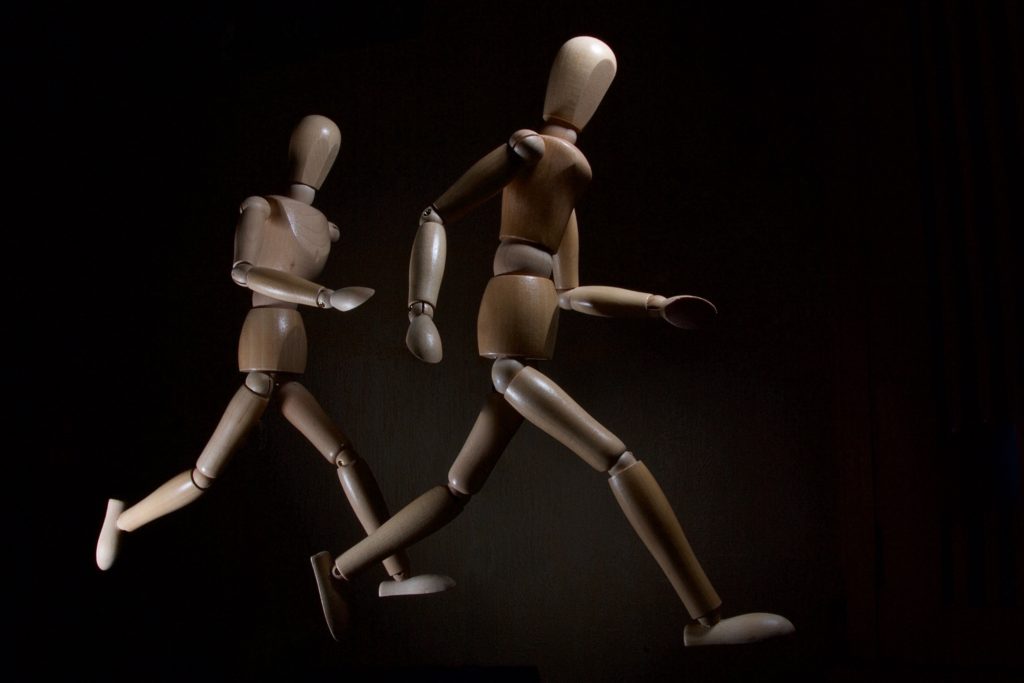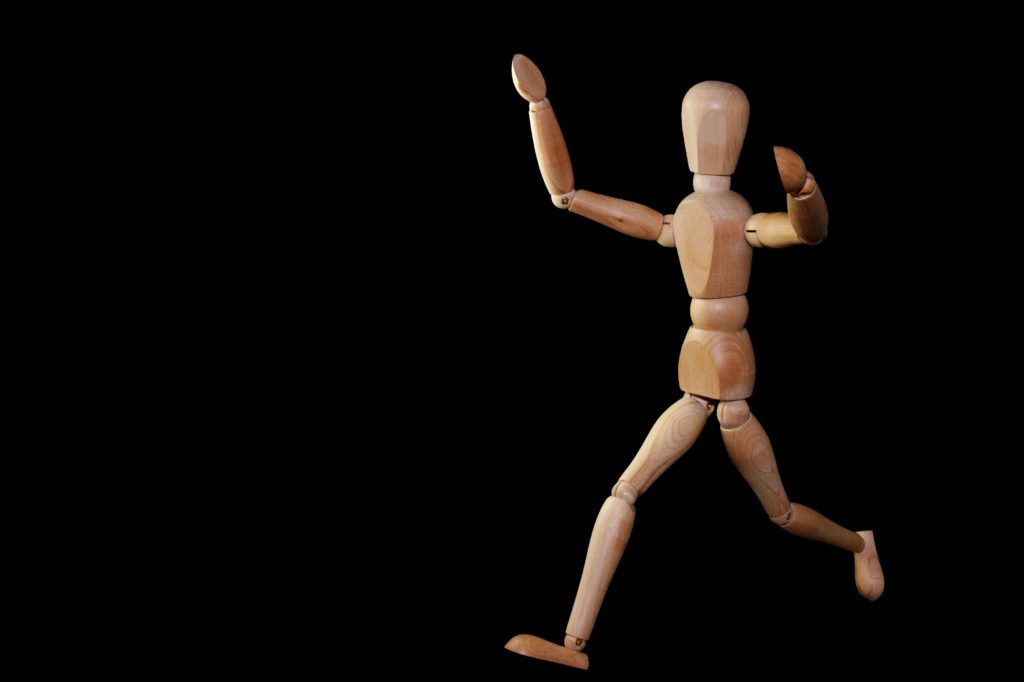
The Body Language Masterclass (Part Two)
You are already an expert at reading Body Language.
Your ability to read the meaning behind people’s words happens almost entirely on a subconscious level. It’s a skill you’ve been honing since you were just a little baby, back when words were nothing more than a bunch of funny sounds.
Much of our survival as a species has depended on our ability to read body language.
Does this new person in our life intend to harm us? Or are they to be trusted?
Their words signal friend, but that scowl suggests alternative intent.
Which of these two signals should you trust?
Or put another way:
If your significant other answers the question, “Is everything alright?”, by folding their arms, shaking their head, and grunting out a barely intelligible, “Fine”, which are you inclined to believe?
The words? Or the body?
That’s right, words are the vehicle of lies, but the body…well, the body’s default language is one of truth.
You’ve got to work pretty hard to tell a lie with your body.
It can be done, but it requires conscious practice and a whole lot of intentionality.
That’s what we’re going to talk about here today.
Not so much how to tell a lie with your body, but, rather, how to use your body to send the messages with intention.
Why?
Because we spend a lot of time worrying about what we’re going to say next in a conversation, that we rarely stop to consider how we’re going to say it.
Which is a shame, because through the careful application of body language, you can send some pretty amazing messages.
Let’s start with the most obvious…
Eye Contact
The face is far and away the most expressive tool available in your non-verbal toolbox, but that doesn’t mean eyes are some magic-gatekeeper to the soul.
They’re not.
They just happen to be the spot on another humans’ face that we focus on.
As a general rule, eye contact’s primary value is in its ability to convey attention and interest.
Problem is, many of us are using eye contact incorrectly. We simply stare-down the other person in a strange contest of wills that eventually leaves everybody uncomfortable and anxious.
To that end, it’s important to allow our eye contact to wander every so often. Perhaps let your orbs drift to the ceiling, or to your conversational partner’s shoulder or hands.
Always keep in mind: Staring at people makes them feel like prey.
Also always keep in mind: Generally speaking, people don’t like being made to feel like prey.
Hard Gaze vs. Soft Gaze
You can make eye contact in one of two way: with a hard focus or a soft focus.
A soft gaze is diffuse. Your stare is somewhat out of focus and the muscles surrounding your eyes are relaxed.
This is the sort of gaze you use when trying to catch something in your peripheral.
Most of your conversational time should be spent with a soft gaze.
Hard gaze, by contrast, is when the muscles around your eyes contract, and you squint as though trying to focus hard on a particular detail.
To activate hard gaze mode, just focus on the other person’s iris as though committing its color to memory.
Warning: Staring at somebody like this for a prolonged period makes people incredibly uncomfortable.
Don’t be that person.
You have been warned.
The time to throw hard gaze into a conversation is when the other person has said something of particular interest.
Again, as with posture, its about dynamics. (Oh wait, you didn’t join us for the first Masterclass? No worries. Here’s that link once more:

Convey new depths of attention by contrasting hard gaze with soft gaze.
Lower Your Voice
Studies show we rank men and women as more capable based on the depth of their voice.
It’s unfortunate, but the simple truth of the matter is this: We respond more positively to people with deeper voices.
If you’re rocking some James Earl Jones windpipes, good for you. If you’re anything like the rest of us, you could stand to drop a couple octaves.
But fear not, there are some techniques to help you get your bass on.
First, understand that we speak from one of three places: Up in our nose (nasally), our throat (bit less nasally), and in our diaphragm (deep, baby).
The first step in lowering your voice is to consciously drop where your breath originates. Imagine relaxing your vocal chords so that they movedown your throat, almost as if you are trying to put it in your chest.
As a reference point, this is your gruff morning voice that sounds oh, so good when your vocal chords are nice and relaxed.
This is the voice you’re shooting for. Unfortunately, our voice tends to rise up into our throat (not to mention our cadence goes through the roof) when we get stressed or excitable. Lowering your voice requires conscious attention. So practice, practice, practice…
There are all sorts of great vocal warmup exercises you can find on YouTube that’ll really help if want to know more on this subject.
Stop Leaning, Stand Up Straight
Just as you would choose your words with care, so too should you choose your body language.
With this in mind, it’s imperative you never undermine your attempts at communication by sending a message you didn’t intend.
This is why you should avoid leaning on things.
On the one hand, leaning might send the message that you’re relaxed and confident, at ease with your environment.
Then again, it might say you’re feeling passive and insecure, unable to bear the load of your own weight.
One of these is likely not the message you intend to send.
So, because you can’t really control which of these two conclusions somebody might jump to, it’s best to avoid it all together.
Stand up straight and confident, on your own two legs, please.
Thank you!
Mirroring
Mirroring is one of the most powerful skills in your arsenal. When done correctly, the other person will feel vastly more comfortable and in-syncwith you. Additionally, they won’t even really understand why they feel that way.
At it’s root, mirroring is utilizing the part of our psychology that appreciates the familiar.
Our brains are hardwired to always be on the lookout for threats. When we find something familiar, it signals to our subconscious that here, in this moment, there is no threat.
This is the sort of feeling you want to elicit in the people around you.
You do this by mirroring their movements, cadence, speech patterns, and posture.
Be careful, however, for mirroring, when taken the extreme, runs the risk of parody. You never want to make the other person feel as though you’re mocking them.
Thus, it’s important that you pick one or two subtle aspects of the other person’s behavior to model.
That might mean mirroring the way they’re sitting, in which case you would cross the same leg as them, or fold your hands in your lap in a similar way.
This might mean you mirror their body language, in which case you would nod or shake your head in unison with them.
Or it might mean you mirror back the 3 most important words in whatever sentence they just uttered. More on this uniquely powerful technique in a later article.
Mirroring is an immensely powerful tool that, but it requires work.
Practicing mirroring requires a lot of intentionality and focus. You must remain conscious of what the other person is saying, while also deconstructing how they’re saying it.
We typically gloss over such things as how the other person is sitting, or talking, or moving, but these personalized tics are a great way to connect.
To practice, go to a coffee shop and just observe other people in their natural habitat. Watch how they sit. How they use their hands. What their eyes are doing.
You gain a lifetime of knowledge from an hour at the coffee shop. That’s time well spent in my book.
Uncross Yourself
It doesn’t matter if it’s themost comfortable default position, crossing your arms is a no-go when it comes to first time professional meetings.
Crossed arms sends the subconscious message of being closed off and defensive.
These are not the emotions you want to elicit in your interactions with others.
You want the other person to feel as though you are open to them and their idea, comfortably in control of your surroundings, and engaged.
You send the opposite message when you stand with arms crossed, so do yourself a favor and just don’t.
Conclusion
Congratulations, you’ve reached the end of this two part Masterclass on Body Language. By now you’ve picked up ten different body language techniques you can use to improve the quality of your communications.
We’ve covered a lot of ground, and it might seem daunting, but remember, you already comprehend body language perfectly.
Your subconscious brain is an expert at deciphering the implicit messages of other people’s body.
The purpose of this masterclass has been to teach you how to start speaking that language fluently yourself. How to start putting words and thoughts together with nothing more than the intentionality of your body.
This is a powerful way of communicating, and one that’s well worth the time and energy spent mastering, but it should be noted that, as with all things in life, mastery is less about the strict adherence to immovable rules, and more about the understanding of when and why some rules should be broken.
It is the same with body language.
We’ve talked about some techniques in terms of “never do this”, but the truth is there’s a time and place for everything.
The purpose of this masterclass has not been to give you a list of hard and fast rules you can live by, but to broaden your understanding of some of the key facets of human interaction.
Armed with this knowledge, I’m confident you’ll use your best judgment to discern when and where certain techniques will be most effective.
Stop into the comments below and let me know which of these 10 techniques you’re most interested in applying to your daily life today. I can’t wait to hear about your journey!
Missed Part One? Check it out below!